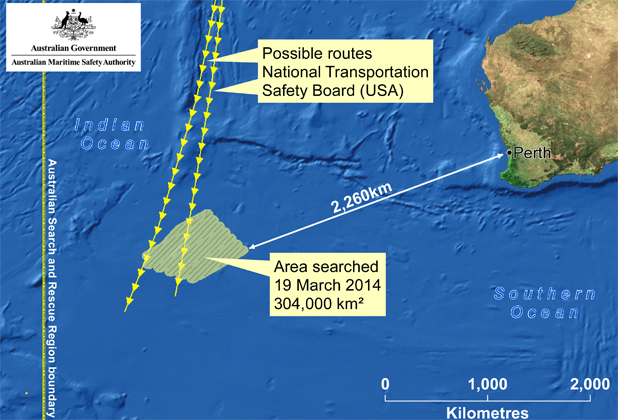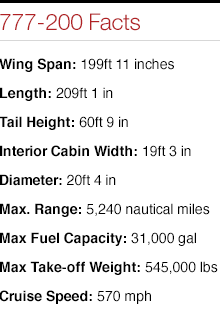Malaysia Airlines Flight 370 search: Chinese, Australian planes spot "objects" in Indian Ocean
PERTH, Australia -- A Chinese plane spotted "some suspicious objects" in the broad area where satellite images have indicated possible debris from the missing Malaysia Airlines Flight 370, but a high-tech U.S. military search plane which responded to the area Monday was able to find nothing.
Hours later, officials said the crew of an Australian Air Force plane had seen two objects floating elsewhere in the Indian Ocean search area.
"Objects have been located by a Royal Australian Air Force P3 Orion," said a written statement from the Australian Maritime Safety Authority (AMSA). The statement said an Australian military ship "is on scene and is attempting to locate the objects," described as "a grey or green circular object and the second an orange rectangular object."
Earlier Monday, China's state-run Xinhua news agency first reported that the Ilyushin IL-76 aircraft's crew had spotted two objects -- said to be "relatively big" and scattered over about two square miles of sea -- and communicated their location to the Australian command center leading the Indian Ocean search, and to a Chinese ice breaker ship en route to the area.
Speaking to the Reuters news agency several hours later, an AMSA spokesperson said a U.S. Navy P-8 Poseidon aircraft was sent to investigate the Chinese reports, but the "P-8 was unable to relocate the reported objects."
According to AMSA, the items seen by the Australian flight crew were "separate to the objects reported by the Chinese Ilyushin."
Rain was expected to hamper the hunt Monday for debris suspected of being from the missing Malaysia Airlines jet, as the United States prepared to move a specialized device that can locate black boxes into the south Indian Ocean region.
The U.S. Pacific command said it was sending a black box locator in case a debris field is located. The Towed Pinger Locator, which is pulled behind a vessel at slow speeds, has highly sensitive listening capability so that if the wreck site is located, it can hear the black box pinger down to a depth of about 20,000 feet, Cmdr. Chris Budde, a U.S. Seventh Fleet operations officer, said in a statement.
"This movement is simply a prudent effort to preposition equipment and trained personnel closer to the search area so that if debris is found we will be able to respond as quickly as possible since the battery life of the black box's pinger is limited," Budde said.
There was no sign the move was because of any break in the mystery of the plane that went missing March 8 with 239 people on board, but rather as a preparation.
It said the weather in the search area, about 1,550 miles southwest of Perth, was expected to deteriorate with rain likely.
Australian Transport Minister Warren Truss said "nothing of note" was found Sunday, which he described as a "fruitless day."
A cyclone bearing down on the Australian northwest coast "could stir up less favorable weather," he said.
Flight 370 disappeared while en route from Kuala Lumpur, Malaysia, to Beijing, setting off a multinational search that has turned up no confirmed pieces and nothing conclusive on what happened to the jet.
In Paris, French Foreign Ministry spokesman Romain Nadal said in an interview with The Associated Press that satellite radar echoes had "identified some debris that could be from the Malaysian Airlines plane."
The spokesman said that these echoes "are not images with a definition like a photograph, but they do allow us to identify the nature of an object and to localize it."
Gathering satellite echo data involves sending a beam of energy to the Earth and then analyzing it when it bounces back, according to Joseph Bermudez Jr., chief analytics officer at AllSource Analysis, a commercial satellite intelligence firm.
Satellite radar echoes can be converted into an image that would look similar to a black-and-white photo, though not as clear, he said. "You'd have to know what you're looking at," Bermudez said.
One of the objects located was estimated to be about the same size as an object captured Tuesday by the Chinese satellite that appeared to be 72 feet by 43 feet, said the official, who declined to be identified because he wasn't authorized to speak to the media.
U.S. underwater wreck hunter David Mearns on Monday described the French satellite sighting of potential debris as a "positive development," although he was unaware of the full details.
The latest French satellite data came to light on Sunday as Australian authorities coordinating the search sent planes and a ship to try to locate a wooden pallet that appeared to be surrounded by straps of different lengths and colors.
The pallet was spotted on Saturday from a search plane, but the spotters were unable to take photos of it.
Wooden pallets are most commonly used by ships but are also used airplane cargo holds, and an official with Malaysia Airlines said Sunday night that the flight was, in fact, carrying wooden pallets. The official spoke on condition of anonymity in keeping with company policy.
Mearns was an adviser to British and French search authorities following the loss of Air France Flight 447 in the Atlantic Ocean during a flight from Brazil to Paris in 2009.
The southern Indian Ocean is thought to be a potential area to find the jet because Malaysian authorities have said pings sent by the Boeing 777-200 for several hours after it disappeared indicated that the plane ended up in one of two huge arcs: a northern corridor stretching from Malaysia to Central Asia, or a southern corridor that stretches toward Antarctica.
Malaysian authorities have not ruled out any possible explanation for what happened to the jet, but have said the evidence so far suggests it was deliberately turned back across Malaysia to the Strait of Malacca, with its communications systems disabled. They are unsure what happened next.
Authorities are considering the possibilities of hijacking, sabotage, terrorism or issues related to the mental health of the pilots or someone else on board.
In the U.S., Tony Blinken, President Barack Obama's deputy national security adviser, said on CNN: "There is no prevailing theory."
"Publicly or privately, we don't know," he said. "We're chasing down every theory."


